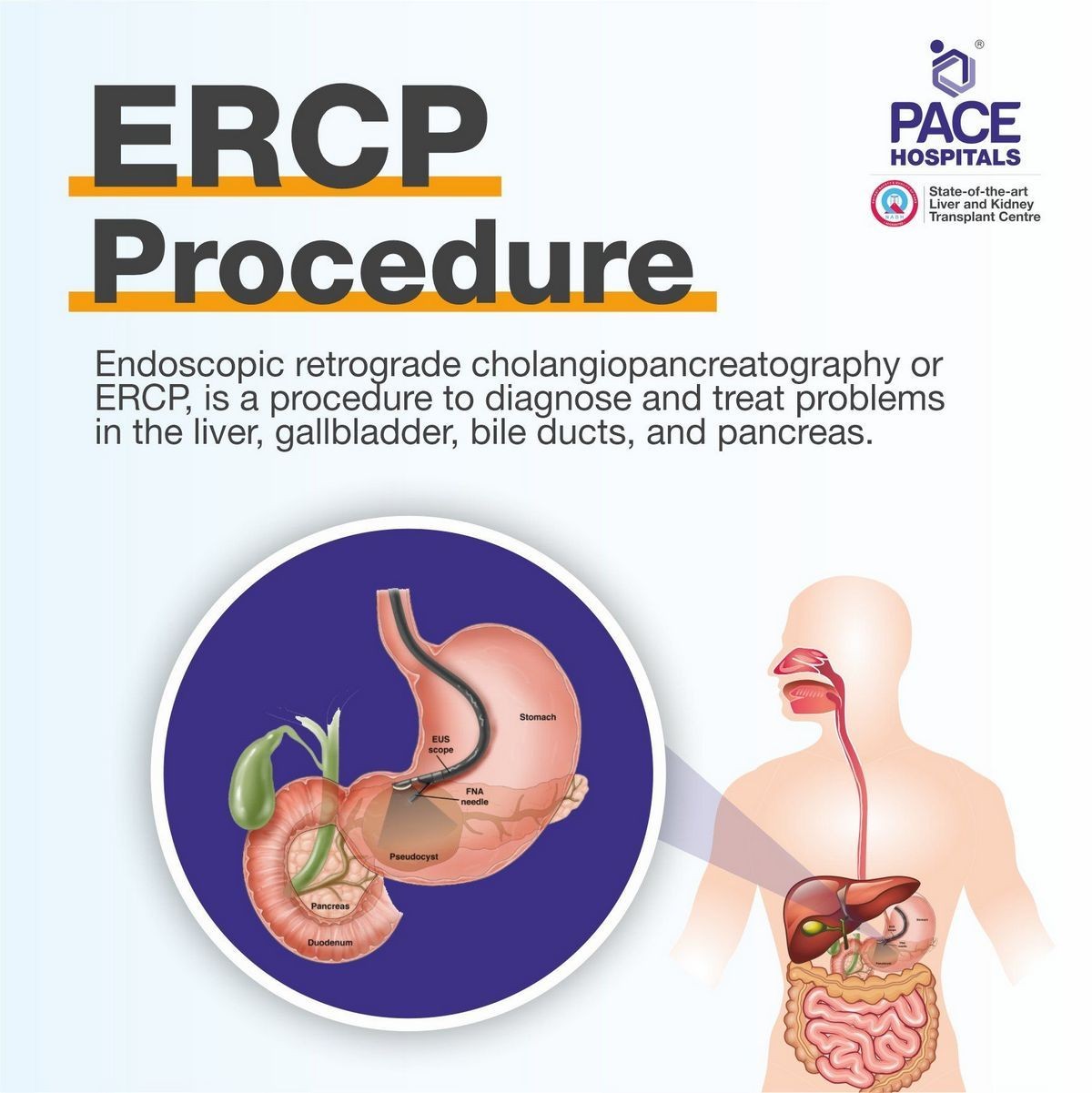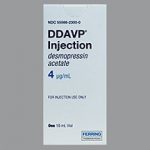
Contents
ERCP (Endoscopic Retrograde Cholangio-Pancreatography)
Endoscopic retrograde cholangio-pancreatography (ERCP) is a diagnostic test to examine the following:
- Duodenum (the first portion of the small intestine)
- Papilla of Vater (a small nipple-like structure with openings leading to the bile ducts and the pancreatic duct)
- Bile ducts
- Gallbladder and the pancreatic duct
The procedure is performed using a long, flexible, viewing instrument called a duodenoscope. The modern duodenoscope uses a thin fiber-optic bundle to transmit light and video images to a TV screen. Contrast material (dye) is injected into the bile ducts and pancreatic duct while X-rays are taken. Other instruments can be passed through an open channel of the endoscope to perform biopsies, insert stents or tubing, or perform incisions using electrocautery.
The liver is a large solid organ located beneath the right diaphragm. It produces bile, which is stored in the gallbladder. The pancreas, located behind the stomach, produces a digestive juice that drains through the pancreatic duct.
An important procedure related to ERCP is endoscopic ultrasonography, which uses a similar endoscope with an ultrasound probe to examine the bile ducts, gallbladder, pancreatic duct, and pancreas. Needle biopsies of the pancreas can be taken through a channel in the endoscope.
A second procedure related to ERCP is the use of miniature endoscopes (Spyglass) that can be inserted directly into the bile and pancreatic ducts, allowing visualization and biopsies.
What kind of preparation is required for ERCP?
To ensure the best examination, the stomach must be empty. The patient should not eat anything after midnight prior to the exam. Heart and blood pressure medications should be taken with a small amount of water in the early morning. A companion is required to drive the patient home after the procedure.
What can be expected during and after the ERCP procedure?
The patient will receive IV sedation or general anesthesia. Local anesthetic may be used to decrease the gag reflex. The duodenoscope is inserted through the mouth and advances through the stomach into the duodenum. The procedure lasts 15 minutes to an hour, depending on the physician’s skill and the specific requirements. After the procedure, patients may feel bloated or slightly nauseated. A companion should drive the patient home.
What are the reasons for ERCP?
ERCP is used to diagnose and treat conditions such as bile duct blockage, jaundice, recurring abdominal pain, cancer of the pancreas or bile duct, and dysfunction of the Sphincter of Oddi.
What are the side effects and risks of the ERCP procedure?
ERCP is a safe procedure performed by experienced physicians. Complications may include pancreatitis, infection, perforation of the intestine, drug reactions, bleeding, and depressed breathing. Irregular heartbeat or heart attacks are extremely rare. Hospitalization may be required in case of complications, but surgery is rarely necessary.
In summary, ERCP is a skill-requiring outpatient examination that provides important information for tailored treatment. It can also be used for therapy, avoiding the need for traditional open surgery. ERCP combined with endoscopic ultrasonography is the preferred procedure for identifying and removing gallstones in the bile ducts.
"Patient information: ERCP (endoscopic retrograde cholangiopancreatography)." (Beyond the Basics). UpToDate.com.


